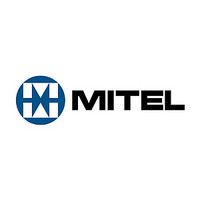vp520s Mitel, vp520s Datasheet - Page 4

vp520s
Manufacturer Part Number
vp520s
Description
Pal/ntsc To Cif/qcif Converter
Manufacturer
Mitel
Datasheet
1.VP520S.pdf
(16 pages)
VP520S
system component, it starts to output a macroblock by using
an output strobe derived by dividing down the clock input.
Detailed timing is given in Figure 3. This strobe only occurs
when data is available at the output pins and at a rate of
SYSCLK/4. The 'Request Macroblock' flag must go inactive
and then active again before a further macroblock is made
available.
if the Frame Enable Bit is set in Control Register 1. Through
this control bit a host controller is able to determine whether a
new frame is to be compressed and transmitted. In an alterna-
tive arrangement the control bit can be permanently set, and
the Frame Ready Flag is then used as an interrupt to the host
controller. It then generates a signal which is used as the
Frame Ready signal for the next device.
to the VP2611 H261 Video Encoder.
TRANSFERING MACROBLOCKS TO THE VP2611
mated video in the DRAM, it raises a Frame Ready Flag ( FSIG
). If the bit in Control Register 1 does not inhibit the output, this
flag becomes the FRMIN input on the VP2611. This responds
to the FRMIN input by generating a Request for Macroblock
Data ( REQYUV ). The VP2611 MUST then receive a com-
plete macroblock ( 384 bytes ) within 1870 cycles of the
system clock. When the VP520S is producing decimated CIF/
QCIF data, writing line data to the DRAM has priority, and only
four macroblock read operations are possible in every 32
clock cycles i.e. one read takes eight cycles. These, however,
are 16 bit word operations and it thus requires 384 x 8/2 = 1536
cycles to output the data. In addition there is a maximum delay
of 60 clock periods from receiving REQYUV to producing the
first output strobe (MCLK). This is still well within the time
available.
transmitted to the VP2611 as eight bytes using a strobe
( MCLK ) derived from the system clock. This is only present
when valid data is available, and it drives the PCLK input on
the VP2611.
30 Hz frame rates to process all the macroblocks. After a field
time ( half an interlaced frame ) the VP520S will start to write
new data to the DRAM, and data could be overwritten during
the last macroblocks. Since there is available space in the
DRAM, a small address offset is used between video fields to
avoid this problem.
4
DATA
FSIG
MCLK
I/P
I/P
I/P
When it receives a REQYUV response from the next
The Frame Ready flag is only available on the output pin
The following sections describe this interface as it applies
When the VP520S has stored a complete field of deci-
The four 16 bit words are stored in the VP520S and
It takes the VP2611 almost exactly all the available time at
Fig 4 : Macroblock Input Timing
10ns min 2ns min
40ns min
First I/P
4SCLK min
Second I/P
40ns min
INTERPOLATE MODE
data in macroblock format, which it then writes to an external
frame store. This is then read back in line format and passed
through vertical and horizontal interpolating filters to produce
two fields of CCIR601 video. Detailed input timing is given in
Figure 4.
identify the start of a frame and to reset the internal address
counter. FSIG must stay high until a complete CIF/QCIF frame
has been received ( internal logic counts macroblocks ). If
FSIG goes low early then the complete frame will be ignored,
and the previously received frame will continue to be dis-
played.
four, must also be provided in order to input data. This must
only be present when valid data is available on the input pins.
Incoming macroblocks are byte wide, and these are internally
buffered to allow four 16 bit words to be written to the DRAM
every 32 system clock cycles. This is equivalent to a byte input
rate of SCLK/4 which must not be exceeded.
frame can be received whilst the previous one is being
displayed. In fact the use of 256K x 16 DRAM's gives sufficient
capacity for more than three complete CIF frames, and the
internal address generator will simply roll around to make full
use of the available space.
normally be used to generate two interlaced PAL or NTSC
fields. These fields continue to be re-generated until a com-
plete new CIF frame has been received. The rate of receiving
frames depends on the transmission bandwidth, but the
maximum rate is 30 Hz. The changeover to the newly received
frame will occur when the VP520S has finished generating
any one of the pair of interlaced fields for display, it does not
SYMBOL
LUM
OUTPUT
INPUT
CLOCK
CHROM
O/P
HBLANK
O/P
t RAC
t RAS
t CAS
t REF
CREF
O/P
t CAC
t RP
t CP
In this mode the VP520S expects to receive CIF/QCIF
FSIG automatically becomes an input which is used to
The CIF frame store is double buffered such that a new
Once a complete CIF/QCIF frame has been received, it will
An input strobe, derived by dividing the system clock by
N.B. All times are quoted assuming 27MHz operation. For lower clock
Fig 5 : Luminance and Chrominance Output Timing
Table 1. External DRAM Timing Requirements
frequencies increase the above values proportionately.
Access time from RAS
Access time from CAS
RAS precharge time
CAS precharge time
20ns max
complete refreshes
RAS pulse width
CAS pulse width
20ns max
20ns max
20ns
max
PARAMETER
Time between
First Cr Component Valid
20ns
max
First O/P Valid
33ns min
50ns or under
12ns or under
80ns or under
50ns or under
MINIMUM
-
-
-
20ns max
20ns max
(8 ms with 256k x n)
105ns or under
Second O/P Valid
MAXIMUM
25ns or under
4 ms or over
First Cb
Valid
-
-
-
-












